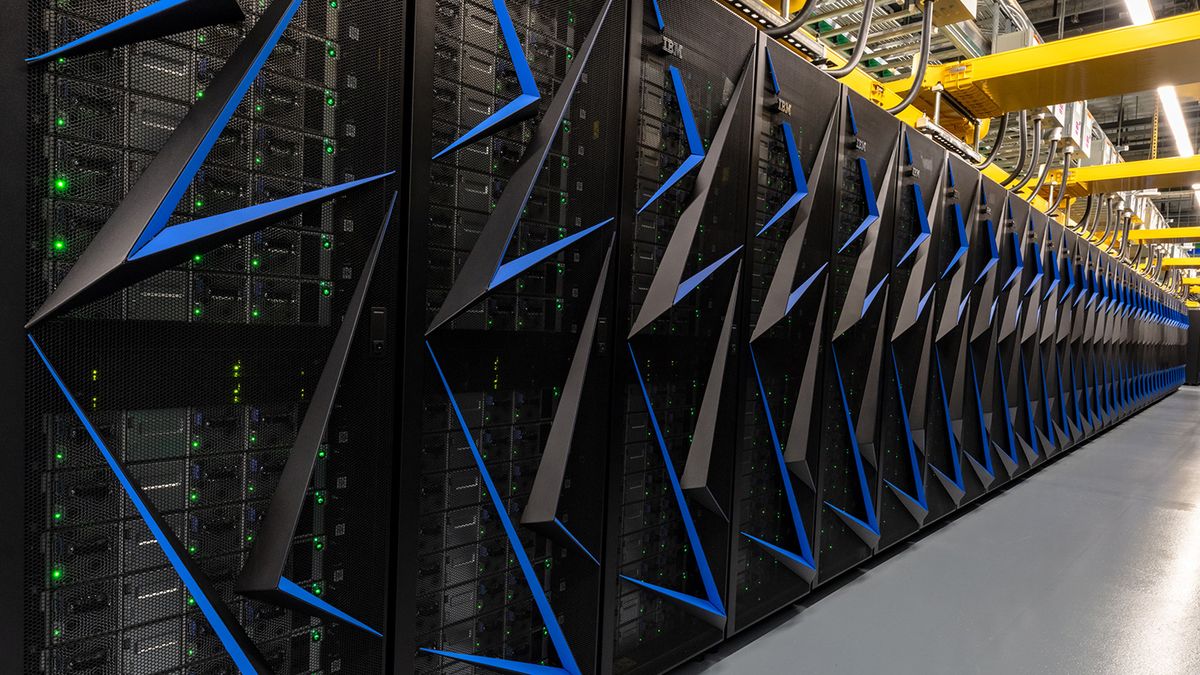
Oak Ridge National Laboratory (ORNL) in Tennessee has announced plans, via X/Twitter, to retire its Summit supercomputer in November 2024. After six years of service and over 200 million node hours of research, Summit’s decommissioning marks the end of the road for what was, in 2018, the world’s most powerful supercomputer.
Summit’s infrastructure includes 9,216 IBM Power 9 processors and 27,648 Nvidia Volta GPUs. With a peak performance of 148.6 petaflops, it has since been surpassed by newer technologies and now ranks ninth globally.
Its successor, Frontier, has already claimed the title of the world’s first exascale supercomputer, significantly outpacing Summit’s computational power. Although it is currently ranked number one in the world, Frontier itself faces stiff competition from several challengers, including Oracle and Elon Musk’s xAI.
Goodbye, Summit!Attendees gathered on the final day of the 2024 OLCF User Meeting to sign a piece of @ORNL’s Summit #supercomputer.After almost 6 years providing over 200 million node hours to researchers around the world, Summit will be decommissioned in November. pic.twitter.com/7bnsPy6bwxSeptember 11, 2024
Not for sale?
Originally scheduled for retirement earlier in 2024, Summit’s life was extended to support additional scientific initiatives. During its final year, it played a key role in over 100 research projects, including contributions to the National AI Research Resource initiative.
ORNL has not confirmed whether it would consider selling Summit, but for those with the financial resources, acquiring the supercomputer could be an attractive opportunity. There is certainly a precedent for such systems being sold. The Cheyenne supercomputer, formerly housed at the NCAR-Wyoming Supercomputing Center (NWSC) in Cheyenne, Wyoming, was ranked as the 20th most powerful computer in the world in 2016. It was sold through the U.S. General Services Administration (GSA) in May 2024. Despite maintenance issues and significant operating costs – thousands of dollars per day – Cheyenne drew 27 bidders and eventually sold for $480,085, plus the costs of dismantling and relocating it. Summit, however, would likely come with a much higher price tag.
The supercomputing landscape has evolved massively since Summit’s debut, especially with the rise of AI-driven data centers. This shift has increased demand on energy resources, with data center electricity consumption projected to reach 6.8% of total US power generation by 2030, up from 4% today.
Frontier is both the world’s fastest and most energy efficient supercomputer, but ORNL thinks it can do better. Looking ahead, the Oak Ridge Leadership Computing Facility (OLCF) is already planning successor to Frontier, named Discovery, which is set to debut by 2028.
More from TechRadar Pro
Services Marketplace – Listings, Bookings & Reviews
